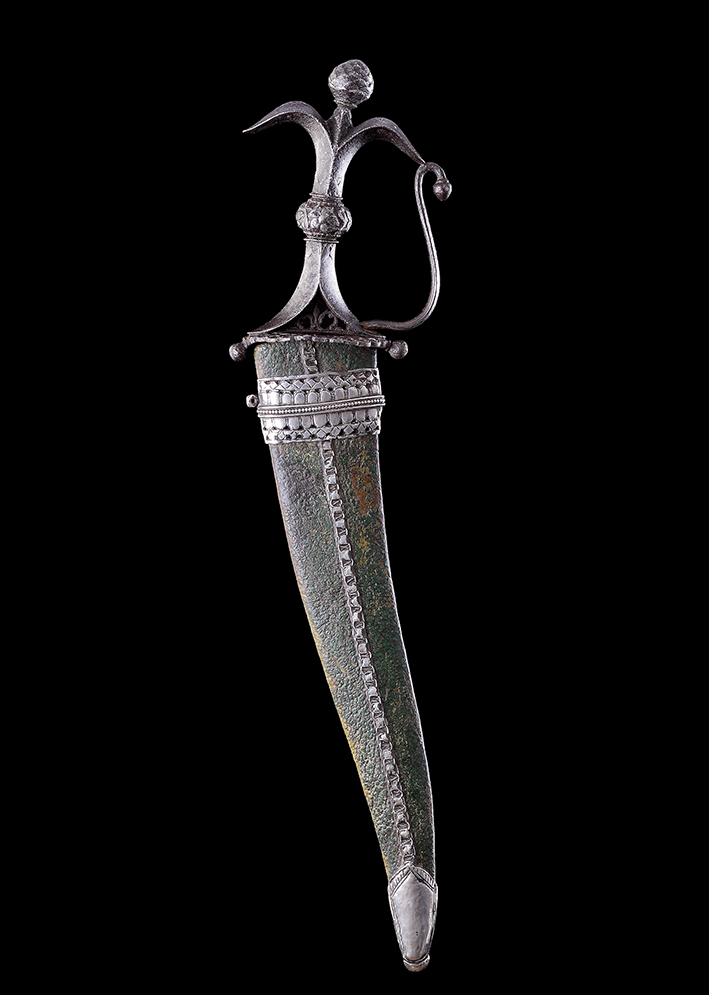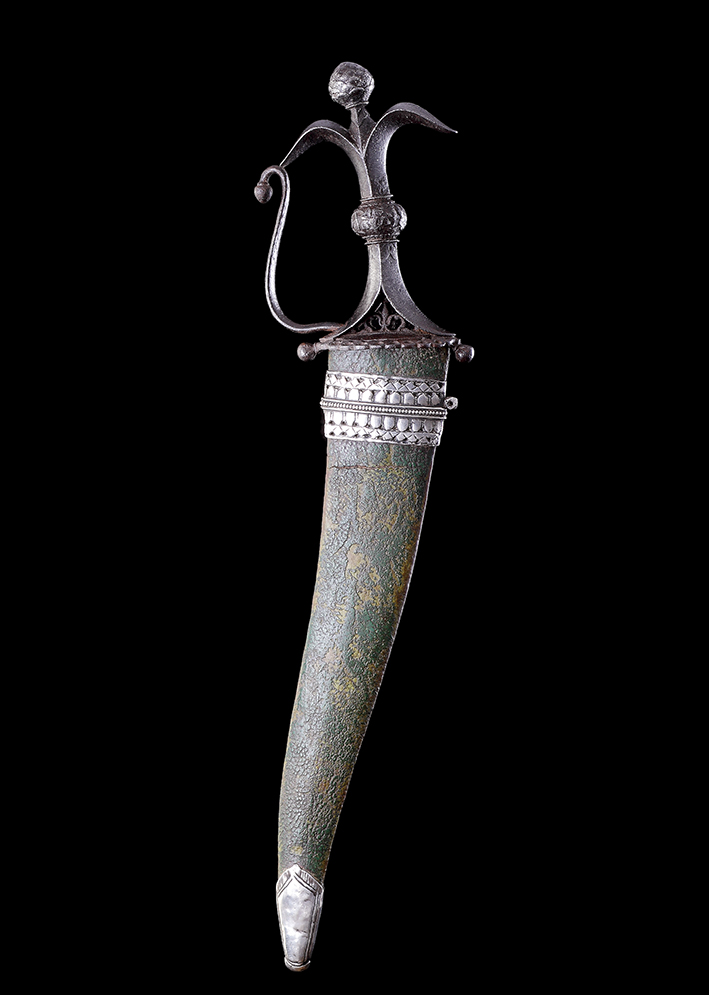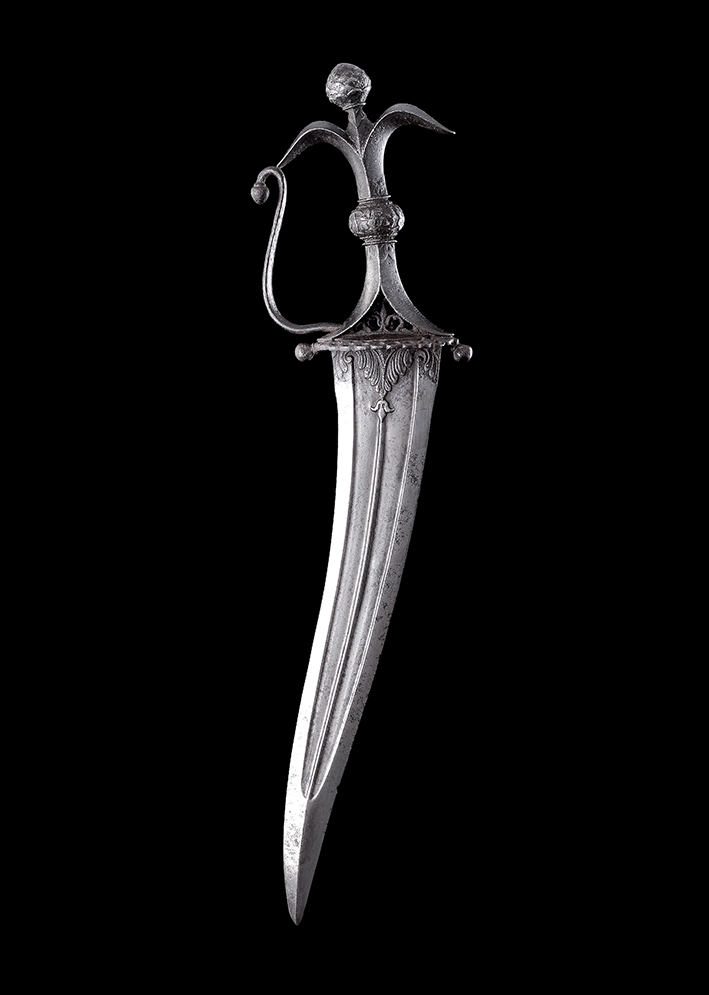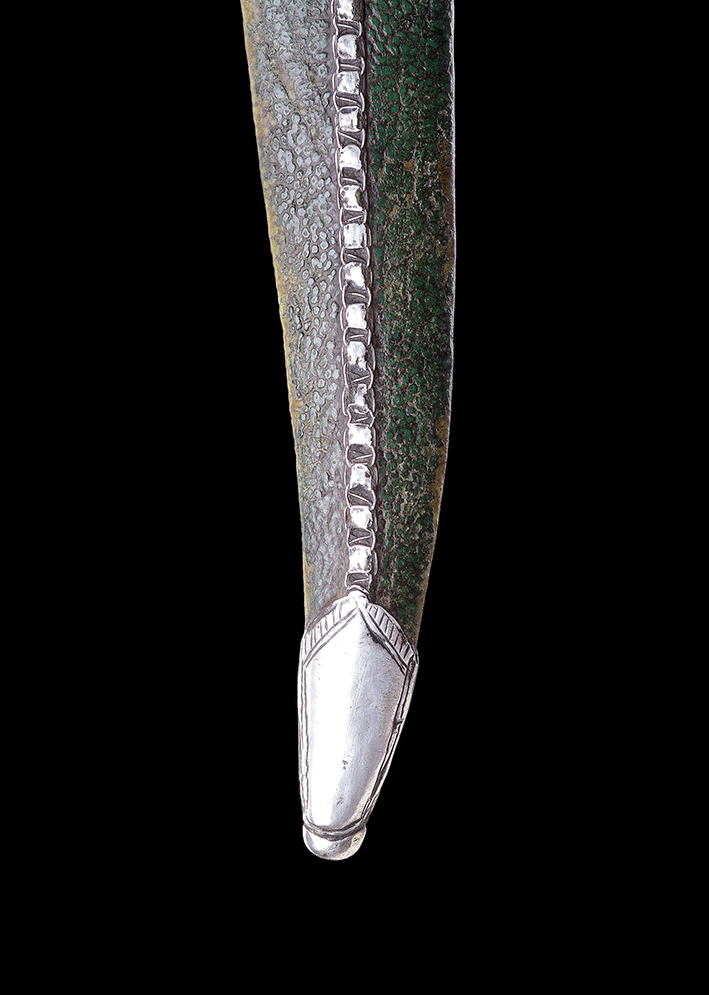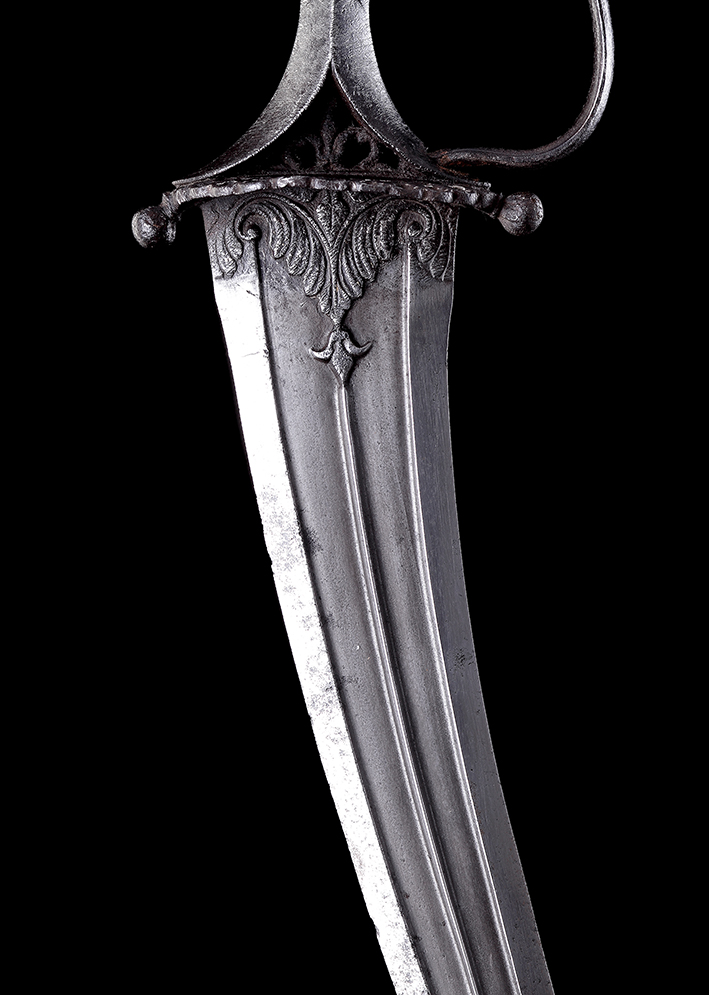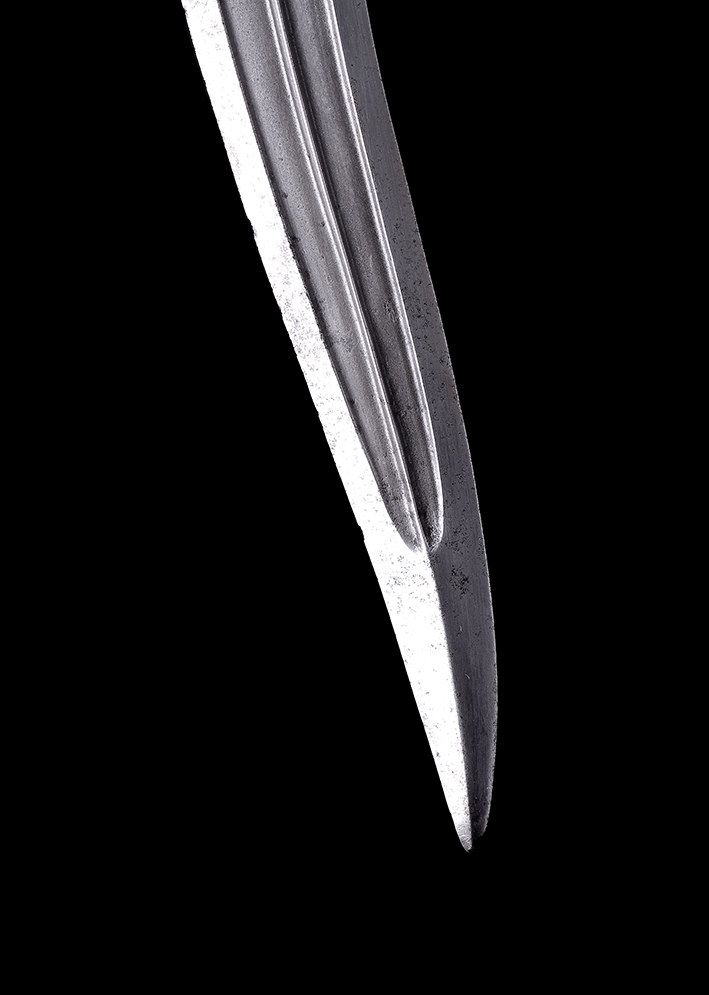Steel Chillanum
Deccan, India
17th Century
Overall: 375mm (14 ¾ inches)
Blade: 256mm (10 inches)
This is an elegant and graceful example of a Deccani double-edged dagger called a chillanum. Sometimes these daggers are referred to as khapwah, a name taken from the A’in-i-Akbari, a 16th-century document recording Mughal administration under Emperor Akbar (1542-1605). It comprises an iron hilt of sculptural quality and a watered wootz steel blade.
The scabbard, with fittings of silver, is covered with verdigris coloured leather and adorned with an ornamented locket. The hilt is of waisted form with a bulbous, lotus top-finial exhibiting carefully cut petals – a floral motif also repeated at the centre of the grip’s moulding. From here the hilt curves into a winged pommel with sweeping arms and a curved knuckle-guard, which terminates in a drooping bud. The oval hand guard features lotus-bud quillons, the outline cleverly cut into a skilful trellis pattern of scrolling flowers and leaved vines. A sloped triangular section between the grip and hand guard has been pierced to convey a trefoil arrangement, perhaps intended to further enhance the foliate decoration. The recurved blade commences with a forte that has been cut into the steel to present the form of a lotus in bloom, as well as stylised flower heads with engraved lines and a range of petal-shapes. The top of the flower continues into a central ridge flanked by two fullers at either side, tapering to converge with the central rib into a single line that leads the blade to its reinforced tip.
Similar examples are published in our catalogues Arms & Armour from the East (2016)[1], and Arts of the Oriental Warrior (2019)[2].
Provenance
European art market
[1] URL : https://www.runjeetsingh.com/inventory/62/gold_chillanum
[2] See URL : https://www.runjeetsingh.com/inventory/284/gold_chillanum and URL : https://www.runjeetsingh.com/inventory/285/steel_chillanum


